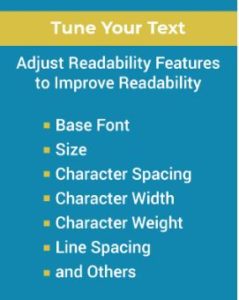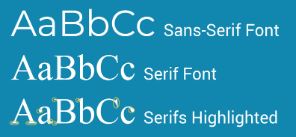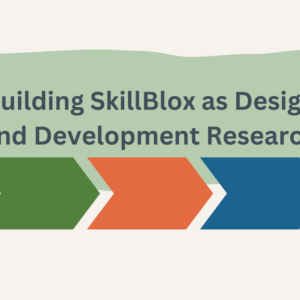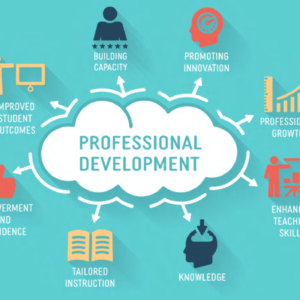Note: This is the first part of a two-part series on readability in digital texts and literacy. The first post defines readability and why it matters. The second post elaborates on recent research done to better understand readability preferences, as well as opportunities to get involved
By Kathy Crowley and Marjorie Jordan, Readability Matters
The world is growing increasingly more digital; from education to the workplace, to news and media, the demands for reading digital text expand daily. In the face of this large demand for reading, nearly 2/3 of the population could be better at reading. This trend begins in fourth grade and extends through life (The Nation’s Report Card).
To improve readability, we must know what is and is not working for readers. One key consideration is that individuals respond differently to the appearance of the text on the screen. Research shows that making subtle changes to text format to support an individual’s unique visual processing capability can create dramatic changes in reading speed, comprehension, and accuracy. This is true across young and old, good and poor readers, and those with good vision. Learn more.
What is Readability?
Readability is the ease with which a reader can understand a written text. The readability of text depends on its content (the complexity of its vocabulary and syntax) and its presentation (the typographic style of the text). Traditional paper-based publishing generally requires the use of a one-format-fits-all model. Readability Matters suggests, “Expecting one text format to be best for all readers is like expecting there is a single eyeglasses prescription that is best for all people.”
Tune Your Text to Improve Readability
To improve reading performance, individuals need the ability to “Tune their Text” or change how words appear on the screen using a full set of “Readability Features”. These include character shape (base font determines character shape and also weight; additional features can provide width expansion of characters), size (the size of the characters), spacing (inter-character space and line space) and background color (black on white, or white on black). The result is reading faster with greater ease and accuracy, therefore allowing for enhanced comprehension.

Our work demonstrates that readability formatting changes can make both adults and children faster, more accurate readers. These changes can increase an adult’s speed of accurate reading by 20% or more, and that of children up to 50% or more. In short:
- There is no best format for all readers, personalization is required
- Children and adults benefit from the use of Readability Features
- Performance improvements occur across all levels of readers
- Reading proficiency improvement is instantaneous
In a recent study co-authored by University of Central Florida, Brown University and Adobe Research, changing the font for adult readers produced impressive gains.
Can I Tune my Text Today?
While researchers continue the work to identify ideal solutions, simple implementations are possible today in many edtech and reading platforms. Adding the capability for the reader to change the base font and text size is already possible in several eBook reader apps. More can be done; adding more Readability Features will make additional gains in reading comprehension and accuracy possible.

Have you noticed the difference that switching base font can make to your reading experience? Do you prefer a heavier or a lighter weight font? Do you like a serif font like Times New Roman, or a sans serif font like Arial? Do you like extra line spacing? All of these can be used to create a better reading experience for the reader.
Next Steps
Readability Matters invites tech, edtech and publishing companies to make Readability Features available for all readers. Better readers are more confident and have more educational, career and life opportunities (Ritchie & Bates). When we invest in raising individual reading performance everyone benefits.
Join our work to put the option for enhanced readability into the hands of those who seek knowledge, learn in school, track trends, and enjoy reading. Visit ReadabilityMatters.org for more information and register for updates. Click the link below to read the second article in this two-part series to learn more about current research and opportunities to get involved.
Read Part II: Readability Features & Technology for Better Reading
About Readability Matters
The not-for-profit Readability Matters advocates for a world where everyone has easy access to reading material personalized to make them the best reader they can be. Our mission is to support the scalability of individual reading formats for implementation in education, business, and beyond. Readability Matters ignites research to support data-driven work with tech, publishing, and education partners.





1 Comment.
I can attest to improvements in reading and writing levels in individuals with disabilities after high school in people who text to communicate. I am a former New York State permanently certified teacher. I have stayed in contact with one of my former elementary school pupils. I have seen the improvement in her reading and writing levels over several years. Even her spelling has greatly improved! She uses her literacy skills much more often now.